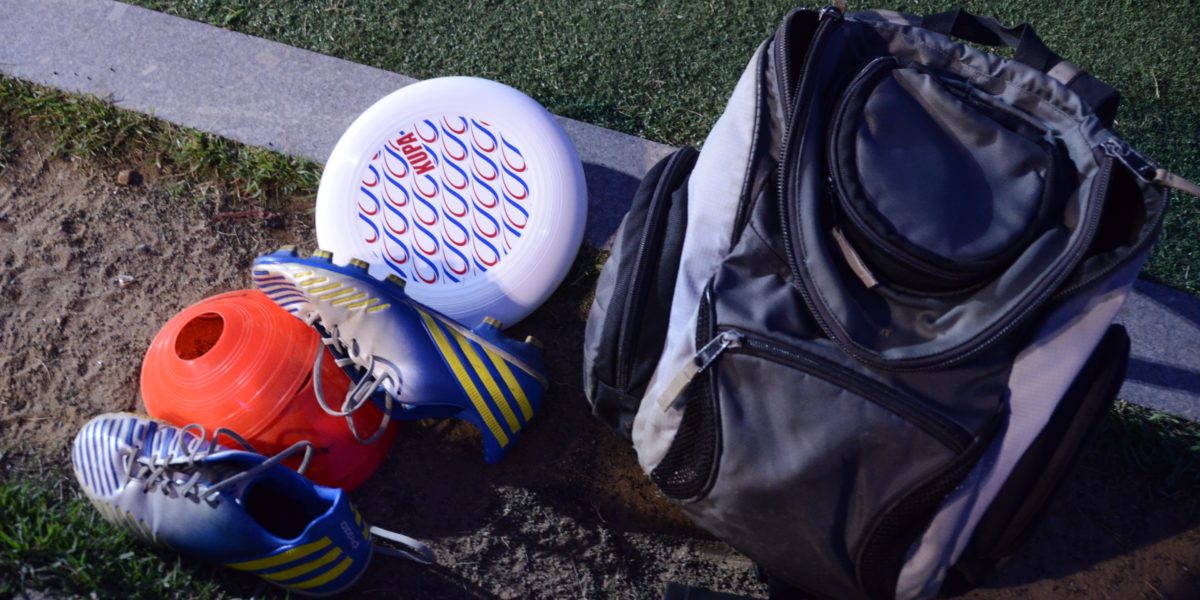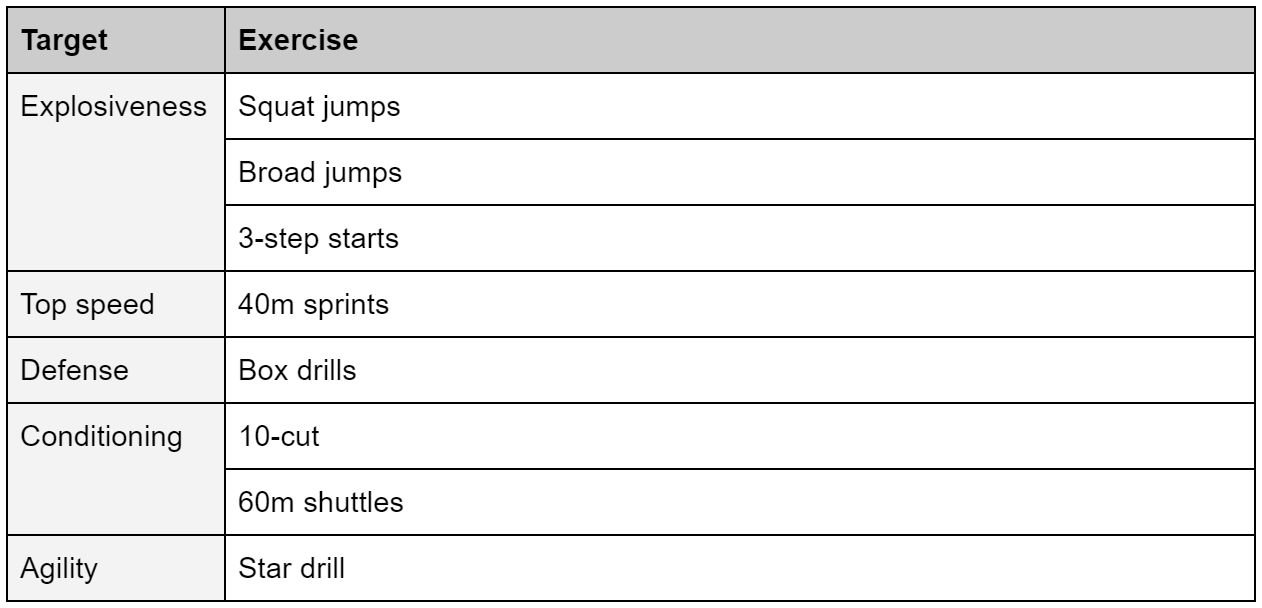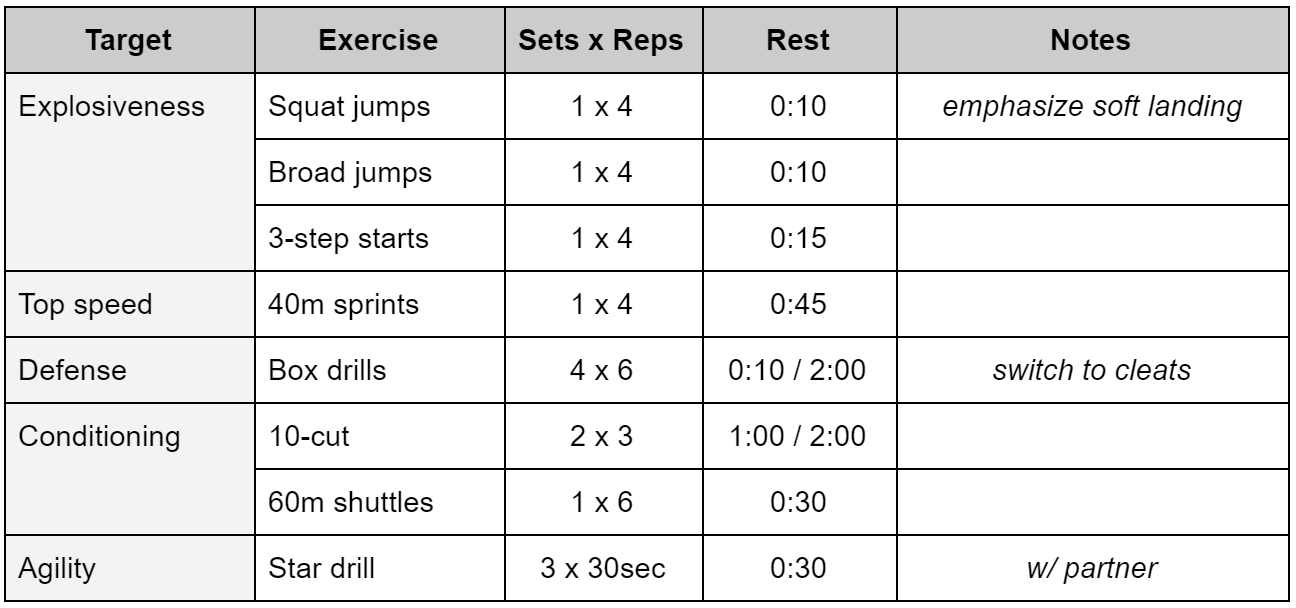
How many of you have been on teams where your sole workout was handed down through four generations of captains? Or maybe it was from a friend’s friend that used to coach their local club team? Perhaps you ripped it off the infamous 300 Workout? (Been there.) It’s probably a solid workout. You worked hard and got faster, which is 90% of what you want out of a workout. However, it’d be really nice to be able to make your own, and tailor it to you and your team’s needs. I personally felt so much freedom when I realized how easy it was to make a workout on my own. I’ll show you my thought process as I make a workout.
First things first. What do I want out of a workout? Top speed? Acceleration? High-intensity endurance (conditioning)? Each target area has some general guidelines a drill needs to meet. In addition, different phases of the year will necessitate different targets. For this workout, I’ll say it’s right before the first tournament. We’ve had a pre-season of strength and some top speed, and now we want to be able to last a whole weekend of games. So my workout will be mostly conditioning, with a little bit of everything else. So let’s see what I need to cover with my exercises:

Now I need to find drills that are going to cover those areas. I have some suggestions, but I highly encourage making up your own that may fit the criteria.

Next I need to find an order. When it comes to speed, you can’t improve your 100% unless you train at 100%, and you can’t train at 100% when you’re tired. So if you want improve your top speed or explosiveness, you need to put it first. Even though it’s not my focus of the workout, I’m still going to do a bit of speed and explosiveness before getting into more tiring exercises.
Likewise, the point of conditioning is to keep working at a high percentage of your maximum intensity even when you’re tired. Another way to think of it is that your exercises with the shortest reps should be first, and your longest reps are last. An agility exercise is just change of direction with a stimulus, and I want my team to continue thinking and making smart decisions under fatigue. I also find that working with a partner helps you finish strong, so I’ll place it at the end. The remaining middle portion will be occupied by cutting drills. So my order will go something like this:
Explosiveness → Top speed → Cutting/Defense → Conditioning & Agility
Filling out those areas with the drills I listed, here’s my workout so far.

The final step comes in figuring out your number of sets and repetitions, as well as how much rest you’ll take between sets and rests. The reps and sets are dictated by how I want to prioritize my time. The rest periods are a bit more complicated. Typically, for a max effort you’d rest 3-5 minutes. That’s helpful for our 100% efforts, but the point of conditioning is that we continue to work better when tired. So I may model it after a typical game, or adjust the rest to meet my needs. I’ll likely have a shorter rest time so I can have the same difficulty with a shorter workout. 1:2 work:rest is a sweet spot I often resort to. Again, defensive technique will fall somewhere in the middle. I want my players to work hard while still keeping good form. If they start to look sloppy, it moves from the category of cutting drills to conditioning drills.
I’ve split my workout into two parts. As they switch to cleats I’ll get cones to set up the next drills, so that we can move quickly from one to the next. This gives them time to get a full rest (3-5 minutes), water, and a little bit of a mental break.

Additional tips:
- Prescribing reps/set and rest for conditioning exercises might be a little more trial and error. Ask your team to rate the difficulty after a workout so you know how to adjust. Or look for when form breaks down and the intensity drops significantly.
- Lay out cones for as many drills in a row as you can, to cut down on rest time during cutting, conditioning, and agility portions.
- Be ready with alternate workouts. For example, if the track is taken up and you need to fit in a small space, you can exchange long sprints with shuttles. Or if someone has their runners but forgot cleats, you may want to switch out box drills with mirror drills.











Comments Policy: At Skyd, we value all legitimate contributions to the discussion of ultimate. However, please ensure your input is respectful. Hateful, slanderous, or disrespectful comments will be deleted. For grammatical, factual, and typographic errors, instead of leaving a comment, please e-mail our editors directly at editors [at] skydmagazine.com.